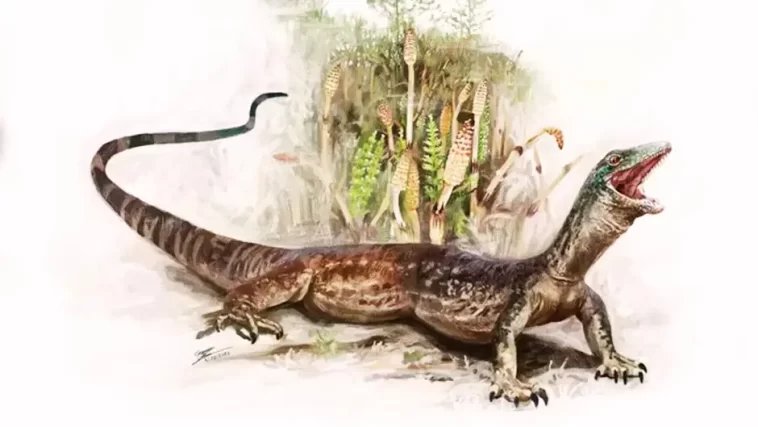A Stunning Fossil Find on the Isle of Skye
The rugged landscapes of Scotland’s Isle of Skye have once again produced a discovery that could reshape evolutionary science. A fossil dating back 167 million years to the Jurassic period has revealed an entirely new species—an ancient reptile that carries the traits of both lizards and snakes.
The newly identified creature, named Breugnathair elgolensis, could dramatically alter our understanding of snake origins. This prehistoric predator displays features that bridge the gap between modern lizards and snakes, suggesting a complex evolutionary story still being unraveled.
A “Fake Snake” with Unique Characteristics
The name Breugnathair elgolensis translates to “the false snake of Elgol”, a nod to both its snake-like features and the Isle of Skye village where it was found.
The fossil is particularly striking for its hook-shaped teeth, eerily similar to those of modern pythons, designed to grip prey tightly and prevent escape. Measuring about 41 centimeters in length, it may not have been the largest predator of its time, but scientists believe it played a crucial role in its ecosystem.
With a flexible, snake-like jaw and recurved teeth, it likely fed on:
- Small lizards
- Early mammals
- Juvenile dinosaurs
A Blend of Contradictory Traits
What makes Breugnathair elgolensis extraordinary is its combination of conflicting features.
- Like snakes, it had a specialized jaw and curved teeth built for capturing prey.
- Like lizards, it retained a short body with fully developed limbs.
- Its skull also displayed similarities to modern-day geckos, suggesting links across reptile lineages.
This unusual anatomy challenges long-held assumptions about the transition from lizards to snakes within the evolutionary order known as Squamata.
The Squamata Puzzle
Lizards and snakes both belong to Squamata, a reptile group that emerged around 190 million years ago. Yet, the evolutionary leap between limbed lizards and limbless snakes has remained a mystery for decades.
This new fossil offers a rare window into that transitional period. According to Professor Susan Evans of University College London, the Skye fossil beds are among the world’s most important sites for studying the early evolution of reptiles.
She explains: “The Isle of Skye provides an extraordinary record of early Squamata. Each new fossil adds another piece to the evolutionary puzzle of snakes and lizards.”
A Decade of Research
Although discovered in 2015 by Stig Walsh of the National Museums Scotland, the fossil took nearly a decade to study in detail. Using high-resolution X-ray scans and CT imaging, scientists carefully reconstructed its internal anatomy, revealing its unexpected combination of features.
The research determined that Breugnathair elgolensis belongs to the subgroup Parviraptoridae, previously known only from fragmented remains. Until now, paleontologists believed snake-like bones and gecko-like skull fragments belonged to separate species. This discovery proves they were actually part of a single, remarkable creature.
What Does This Mean for Snake Evolution?
The implications of this discovery are profound. Breugnathair elgolensis raises crucial questions:
- Did modern snakes evolve directly from this lineage?
- Or did similar jaw and skull features evolve independently in multiple reptile groups?
- Could this species represent an ancestral branch that led to both lizards and snakes?
So far, scientists have no definitive answers. But one thing is clear: this fossil forces researchers to rethink the evolutionary story of snakes.
The Broader Impact of the Discovery
Beyond its specific evolutionary significance, this discovery underscores the importance of paleontological research in Scotland. The Isle of Skye continues to yield fossils that reshape our understanding of ancient life, from marine reptiles to early mammals and now squamates.
The find also illustrates the role of modern technology in uncovering ancient secrets. Without 3D scanning and digital reconstruction, many of Breugnathair’s defining traits would have remained hidden within the rock.
Conclusion: A Game-Changer in Evolutionary Science
The discovery of Breugnathair elgolensis is more than just another fossil—it is a scientific turning point. By combining traits of both snakes and lizards, it fills a critical gap in the fossil record and highlights how evolution can produce surprising, mosaic-like creatures.
As scientists continue to study this fossil and search for related species, one thing is certain: the story of snake evolution is far from complete. With every new find, the past becomes a little clearer—and sometimes, a lot more complicated.

